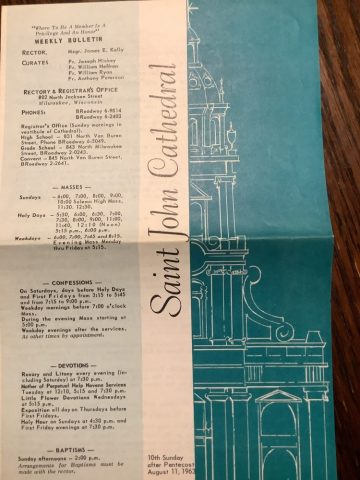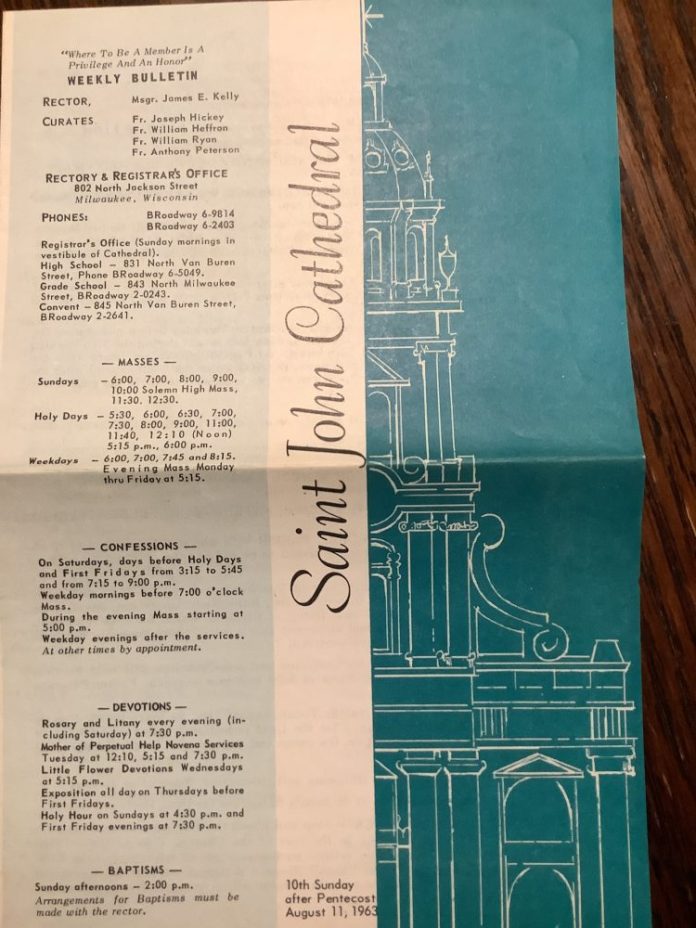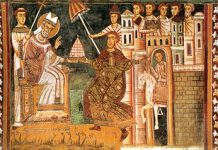For these latter days of Lent, I just began reading Father Romano Guardini’s Jesus Christus – his 1963 meditation on the life of the Saviour, and a recommended read – when I noticed tucked within its pages this bulletin from Saint John’s Cathedral in Milwaukee, Wisconsin. It’s from the same year, preserved in pristine condition, :

Readers may join with me in marveling, wondering, and asking – what happened?
This is August 1963. The Second Vatican Council had been running for one year, but had not produced any documents. Pope John XXIII, who had called the Council, had died the previous June 3rd, and Cardinal Giovanni Baptisti Montini had been elected Pope on the 21st of the same month as Paul VI. He chose to continue the Council, which would resume that October. No one had much idea of what was on the stormy, horizon, with a bad moon risin’ (CCR released the song six years later, April of 1969, with the storm then in full swing).
Yet there, in 1963, Saint John’s Cathedral is offering four Masses every weekday morning, on the half-hour, in the solemn beauty of the Traditional Latin Mass, the first of them at 6 am, for all the workers and students who had the very beneficial habit of going, even receiving, daily. Bring back the pre-dawn liturgy, and may the Eucharist be elevated with the rising sun!
On holy days, there were twelve Masses, the first of them at 5:30 am. All of them, we may presume, well-attended.
I need scarcely – and would really rather not – look up what is now on offer at the cathedral. Most Mass times in parishes, even many cathedrals, are suitable only for retirees or those on vacation.
What intrigues me is how we got from there to here, and how quickly the collapse occurred. It was not the Council, nor most of the bishops in attendance, but rather what was unleashed after the Council, all too often in the name of its ‘spirit’: Secularism, hedonism, the sexual revolution, the ‘updating’ and banalization, vernacularization, and laicization of the Mass and the other sacraments, with consequent loss of transcendence and a sense of eternity, and, ultimately, a loss of Faith.
That bulletin was like a time capsule to a long-lost era, evoking a nostalgia, even though I was not alive to see it. Then again, by the grace of God, what was may yet be again, and perhaps, in hope, we all may live to see the age of Faith return in a different key or mode, perhaps less intertwined with the culture at large, but all the more splendorous for it.











